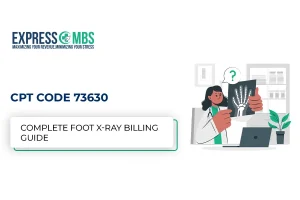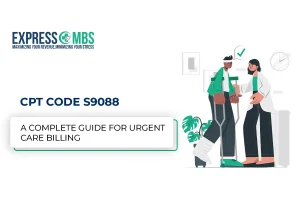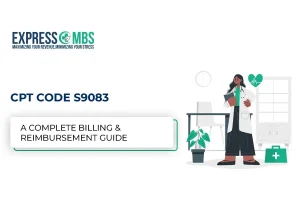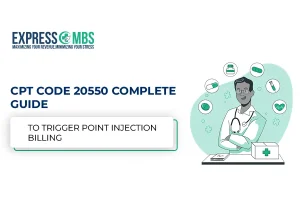
Understanding 12001 CPT Code for Laceration Repair

Minor wound closure is a frequent procedure in urgent care environments, and CPT 12001 is commonly used to report uncomplicated laceration repairs. Knowing how to correctly document, code, and bill this procedure is essential for both providers and billing professionals. Whether you’re managing a walk-in urgent care center or processing claims behind the scenes.
This blog walks you through the full landscape of CPT code 12001, including reimbursement details, The global period for CPT 12001 is 10 days, which means any routine follow-up care related to the laceration.
- What CPT Code Covers: Minor laceration repair of 2.5 cm or less using simple closure techniques.
- Session Duration Requirements: No specific time component; based on wound length.
- Who Can Use the Code: Physicians, nurse practitioners, PAs, and urgent care providers.
- Best Practices: Clear documentation of wound length, location, repair technique, and materials used.
What Is the CPT Code 12001?
CPT code 12001 is portion of the laceration repair family and is used exactly for simple wound closures that are 2.5 cm or less. It varies from 12002, which applies to wounds measuring 2.6 to 7.5 cm, and 12032, which is used for intermediate layered repairs.
This includes epidermis or dermis-level closures using sutures, staples, or adhesive strips.
Who Can Bill CPT Code 12001?
Billing for CPT 12001 is not limited to surgeons. The following healthcare professionals can appropriately bill it:
- Emergency physicians
- Family practice physicians
- Nurse practitioners (NPs)
- Physician assistants (PAs)
- Urgent care providers
- General practitioners
Real Insight: In our billing experience with urgent care centers, we often find that undercoding or missing the opportunity to bill for wound repair leads to substantial revenue loss. Always double-check wound documentation.
Services Covered Under CPT Code 12001
Here’s what CPT code 12001 typically includes:
- Cleaning of the wound
- Simple conclusion using sutures, tissue adhesive, or staples
- Application of sterile dressings
- Minimal debridement, if necessary
This code does not include more complex services such as layered closure or extensive tissue manipulation, those require codes like 12002, 12011, or 12032, depending on complexity and length.
Time Requirements (if applicable)
Unlike some procedural CPT codes, CPT code 12001 is not time-based. It depends purely on the wound length and complexity. You must measure and document the exact length in centimeters to support proper code selection.
Modifier Use with CPT Code 12001
Modifiers could be needed in the following situations:
- Modifier -25: If the wound repair was performed in addition to a separately identifiable E/M service during the same visit.
- Modifier -59: When multiple wounds are repaired at different anatomical sites.
- Modifier -51: If other procedures were performed in the same session.
Does CPT Code 12001 Have a Global Period?
Yes. CPT code 12001 has a global period of 10 days. This means any follow-up care related to the wound repair (e.g., suture removal, infection checks) is not separately billable during that time.
Global Period for CPT Code 12001 – 10-day global fee includes post-procedure visits and minor complications.
Common Billing Mistakes to Avoid
- Billing E/M without Modifier -25
If you’re performing an evaluation and a procedure, don’t forget the modifier. - Missing Wound Length Documentation
The difference between 12001 and 12002 depends on the exact size. - Incorrect Site Description
Know which anatomical sites qualify under this code. - Not Applying Global Period Rules
Billing for a suture check during the global period? That’s not separately reimbursable. - Using S9083 inappropriately
For urgent care centers operating under a global fee contract, S9083 may apply instead. This code is used when a single, all-inclusive payment is made regardless of the services provided.
Reimbursement Rates for CPT Code 12001
Compensation can be different based on location, payer type, and contracts. Here’s a general Medicare national average (subject to change):
Code | RVU | Approximate Payment (Medicare) |
12001 | 1.00 – 1.20 | $38–$45 USD |
- 12001 CPT code RVU: Typically 1.1 (includes pre, intra, and post-op work)
- 12001 CPT code reimbursement: Check with private payers and Medicaid, amounts can differ substantially.
Variance between CPT Code 12001 and Related Codes
Code | Description | Use When |
12001 | Modest repair, 2.5 cm or less | Minor laceration closure |
12002 | Simple repair, 2.6 – 7.5 cm | Slightly longer wounds |
12011 | Face, ears, eyelids — 2.5 cm or less | Facial injuries |
12032 | Intermediate repair of 2.6 – 7.5 cm wounds | Layered closure or extensive prep |
Final Thoughts
In urgent care or primary care environments, CPT code 12001 is easy to overlook or miscode without strong documentation. Remember:
- Accurately measure and document wound size
- Apply modifiers carefully based on services rendered
- Respect the 10-day global period
- Consider payer contracts, some urgent care centers may use S9083 CPT code, which bundles all services into a flat fee
Pro Tip: Always confirm with your payer whether S9083 applies in urgent care settings. This code reflects a global fee payment model, meaning you won’t itemize services like 12001 separately.
Visit our Physician Billing Services or Medical Coding Services pages at Express Medical Billing. Let us handle your coding so you can focus on care.
Frequently Asked Questions (FAQs)
CPT code 12001 is used when a provider performs a simple closure of a superficial laceration that is 2.5 cm or less in length. This type of wound only requires basic suturing or adhesive without any layered closure or deep tissue work. It’s most commonly billed in urgent care, emergency rooms, and family practices.
Yes, if a wound closure is done during the same encounter as an evaluation and management (E/M) service, it’s important to use Modifier -25 with the E/M code. This shows that the evaluation was independently necessary from the procedure. Omitting this modifier is a frequent error that can result in denials from payers.
To ensure compliance and proper reimbursement, your documentation should include:
- Exact wound length in centimeters
- Location and type of wound
- Repair method (sutures, staples, adhesive)
- Medical necessity for the repair
Billing without clear documentation risks audits or payment denials.
While 12001 covers simple closure of wounds ≤2.5 cm,
- 12002 are cast-off for wounds 2.6–7.5 cm.
- 12032 involve intermediate repair, like layered closure or deeper tissue repair.
Using the wrong code based on wound size or complexity can result in under billing or compliance issues.
If your urgent care facility operates under a global fee agreement using S9083, individual services like CPT code 12001 are typically not billed separately. Instead, all procedures performed during the visit are bundled into one flat-rate payment. Always verify your payer contract before submitting claims.
CPT code 12001 has a 10-day global period, meaning all routine follow-up care related to the wound, like suture checks or minor infection management, is bundled into the initial payment and not separately billable during that time.



